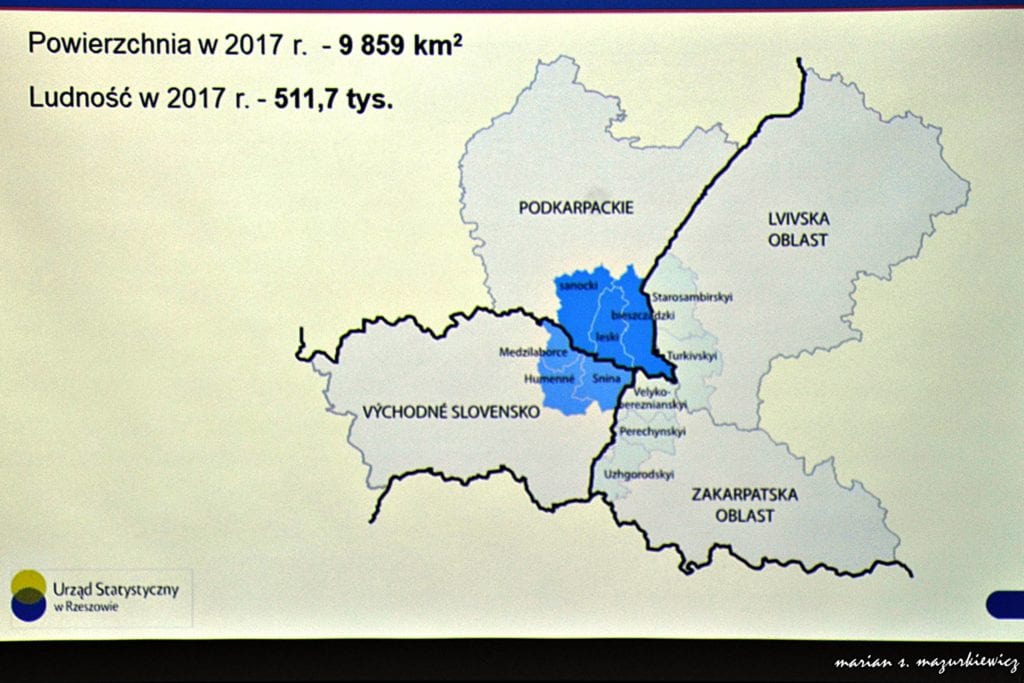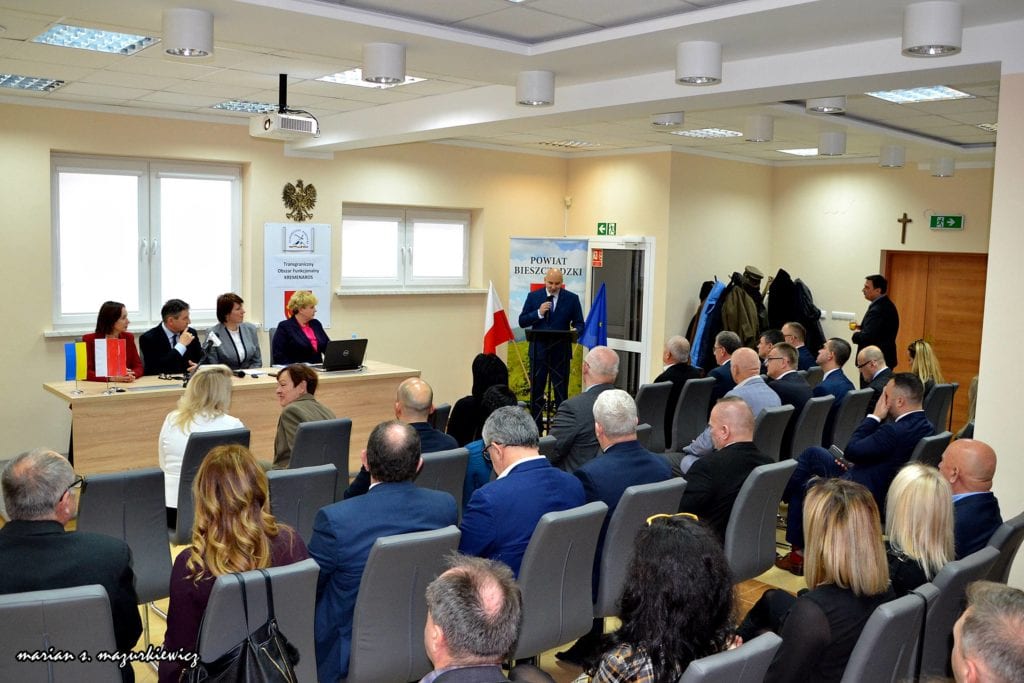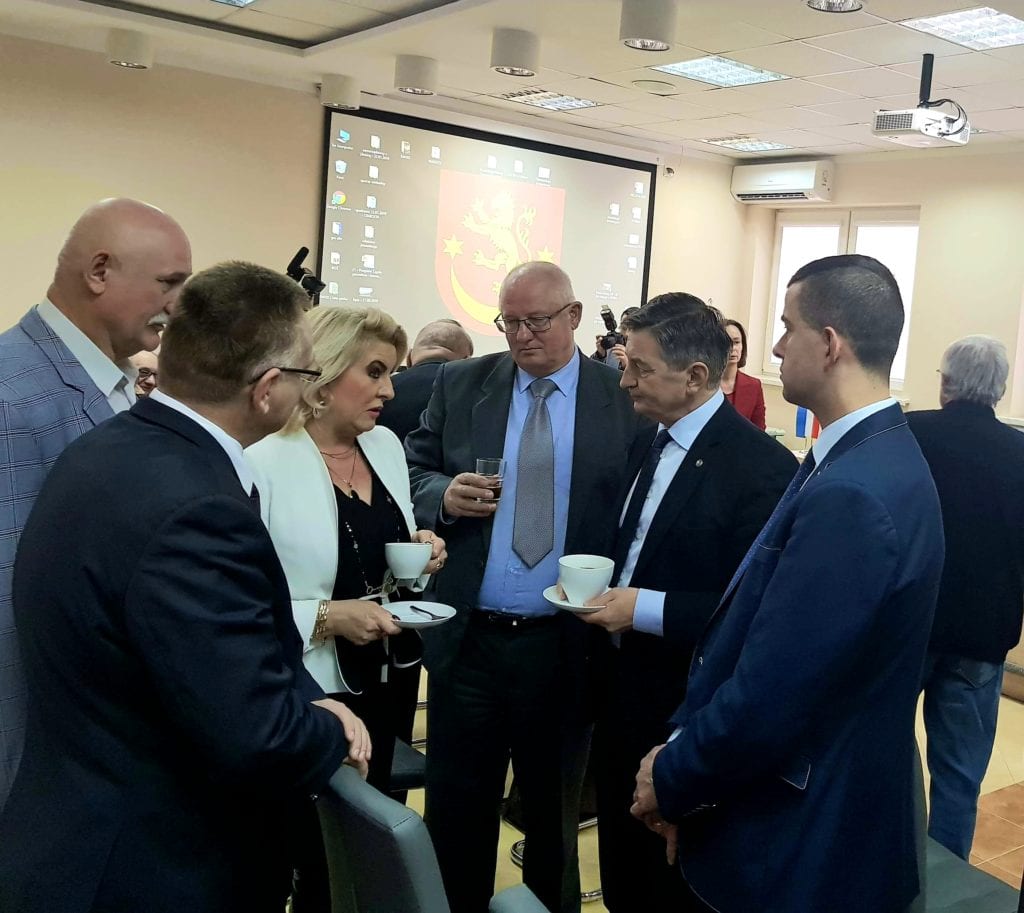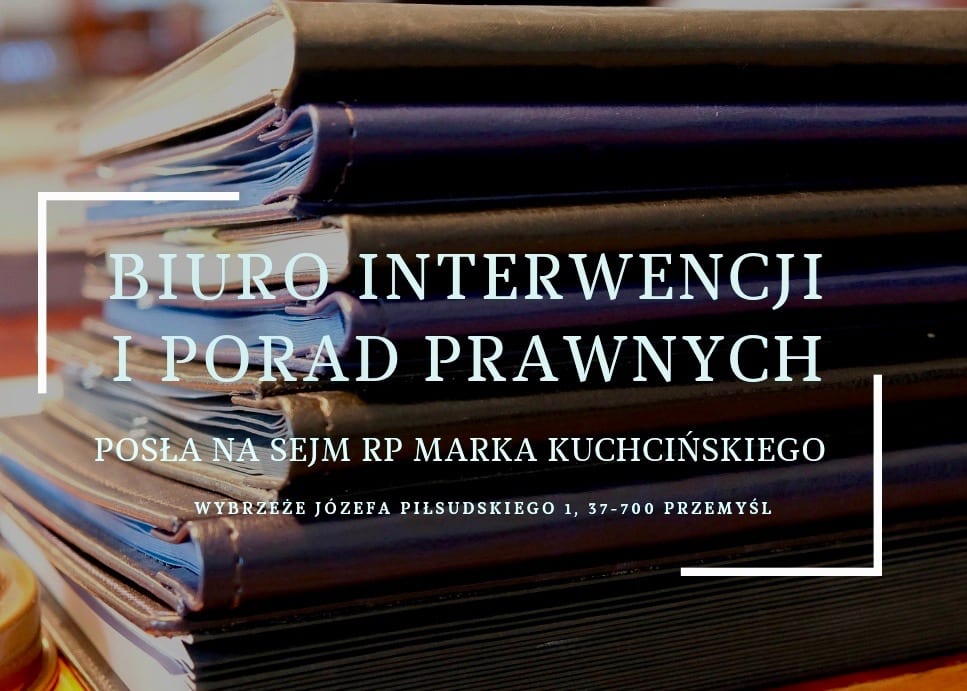On December 7, 2019, in Ustrzyki Dolne, talks were held on the creation of the second Kremenaros Transboundary Functional Area (TOF Kremenaros), after the "Low Beskids", to operate within the framework of the Carpathian Euroregion. It will include neighbouring border counties and communes from Poland, Slovakia and Ukraine located in the vicinity of the meeting point of three borders. These are areas of particular natural and cultural value, important also for the water resources of the Carpathians. At the same time they require state and EU support. Living conditions are difficult there and despite the attractiveness of the area the population is decreasing - they are emigrating to bigger centers.
The main objectives-themes of TOF activities-are related to common development, including: education, communication accessibility, tourism infrastructure, innovation and ecology. During the discussion, the growing importance of a common "Carpathian brand" was emphasized, including regional products, of which Podkarpacie has the largest number in Poland. Attention was also drawn to language barriers. Trilingualism, i.e. knowledge of the languages of neighbors, similarly to the Alpine or Benelux countries, could be a solution. In Ustrzyki Dolne it was announced that the structures of the Cross-Border Functional Area will be established next year.
The conference was attended by representatives of the border local governments that will form the Cross-border Functional Area. On the Polish side, these are the Sanocki, Bieszczadzki and Leski counties, on the Slovakian side: Medzilaborce, Humenne and Snina counties and five regions from Ukraine: Starosambirskyi and Turkivskyi, and in Zakarpattia: Velykobereznianskyi, Perechynskyi and Uzhgorodskyi.
During the meeting, it was also announced that a third TOF, under the name of "Przemysl Gate", would be created to cover the districts of Przemysl, Jaroslaw, Przeworski and Lubaczow.
According to the project originator, Director of the Carpathian Euroregion, Dawid Lasek "the development of smaller areas will be easier to support with specific projects, financed for example by the European Union."
This was also confirmed by Bogdan Rzonca, Law and Justice MEP: "There will be no lack of money for cross-border cooperation, for Euroregions, for projects in the Carpathians, for example. If budget cuts are discussed in the European Union, no one questions the sense of financing cross-border areas".
Marek Kuchciński, member of Law and Justice party and Marshal of the Sejm of the 8th termIn his speech to the meeting, in which the Polish government strongly supported the development of the Bieszczady Mountains with a special programme, he stressed the issue of accessibility, communication as the basic challenge and the need for development of tourist infrastructure. He spoke about interstate talks with Ukraine on supporting the development of railroads, roads and Polish-Ukrainian border crossings.
Marek Andruch, Starost of Bieszczady District and organizer of the conference stressed that tourism should be "the engine of development, which in the perspective will shape our lives and I do not imagine that this tourism will be closed only in this narrow region of the High Bieszczady".
Attention was also drawn to the need for changes in the existing legislation, e.g. to facilitate the development of wood processing in the Bieszczady, or oppressive nature protection laws that make it difficult for local governments and inhabitants to manage these areas properly. A similar situation occurs in relation to damages caused by wild animals.
Looking ahead, it was requested that the House and Senate committees meet to discuss these issues.
Statistical data proves how important is the development of transboundary cooperation for the Polish economy: 50 kilometers in depth (from the eastern and southern borders) Podkarpacie is visited by several million Ukrainians and Slovaks per year. According to the Central Statistical Office Ukrainians spend there about PLN 5.7 billion, Slovaks PLN 2.5 billion, which translates into maintenance of tens of thousands of jobs!
The area of the broadly understood Bieszczady Mountains, including border poviats and gminas, has a chance to strengthen its attractiveness also due to the planned large investments, such as the gondola railroad over the dam in Solina, Central Sports Centre in Ustrzyki Dolne, border crossings, including the tourist one in Wolosat, or new ski routes planned in Wańkowa and Cisna.
The near future brings new challenges at the regional level. It is necessary to look for new directions and forms of cooperation to optimize the use of the potential and eliminate cross-border obstacles of the regions of our country. Cross-border functional areas, which are worth supporting, are the solution.




Photo: M. Mazurkiewicz, A. Paniw


